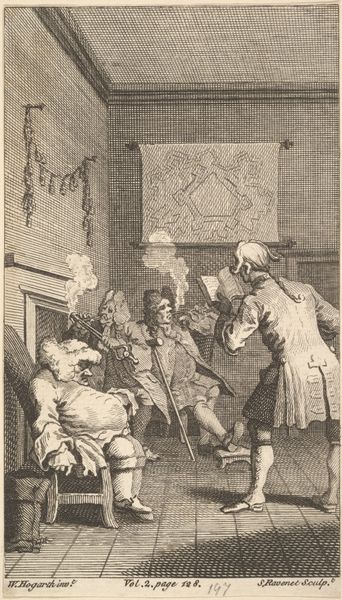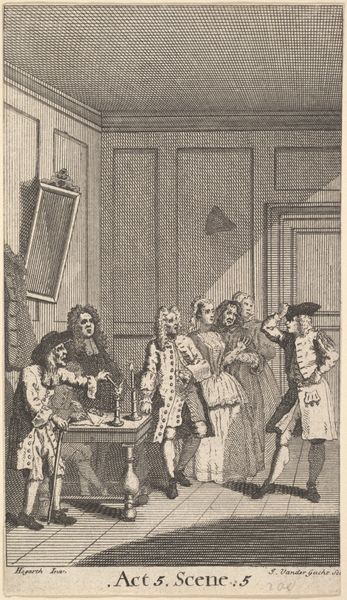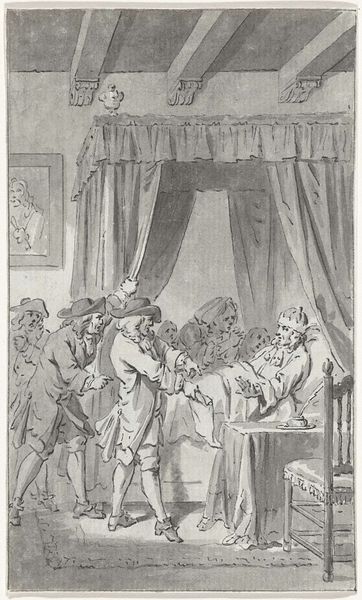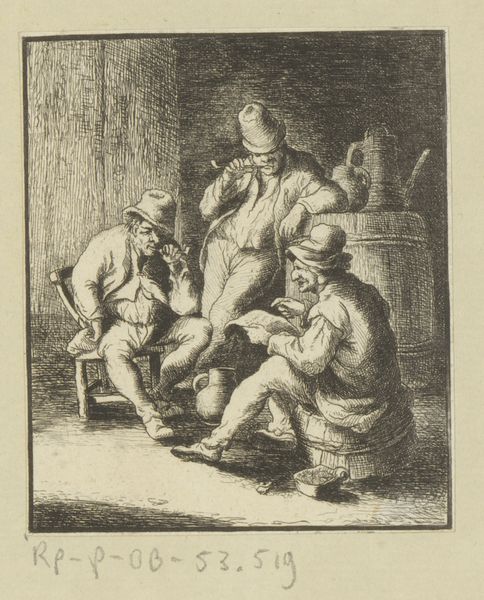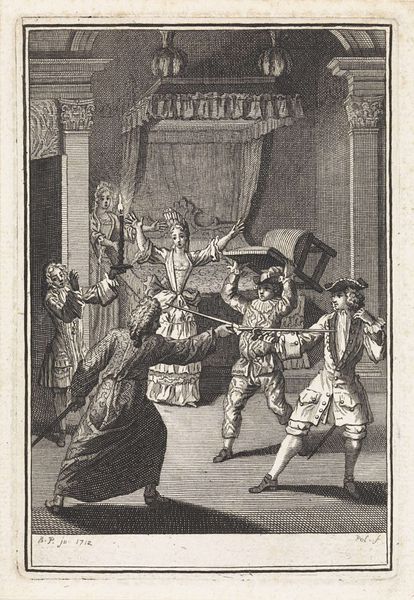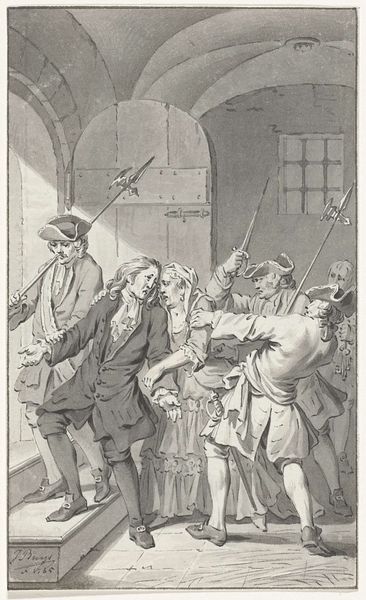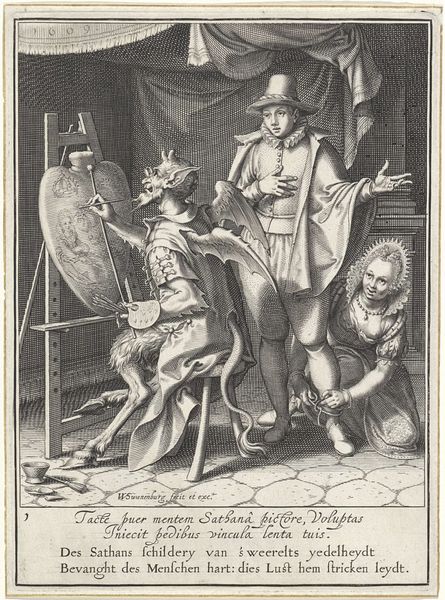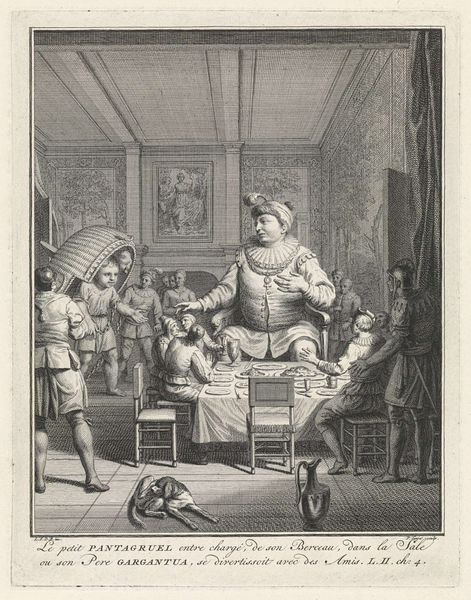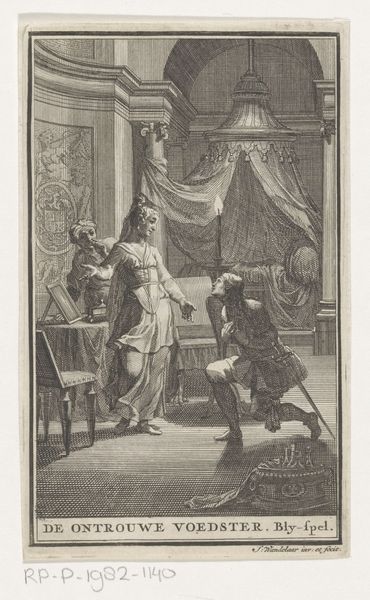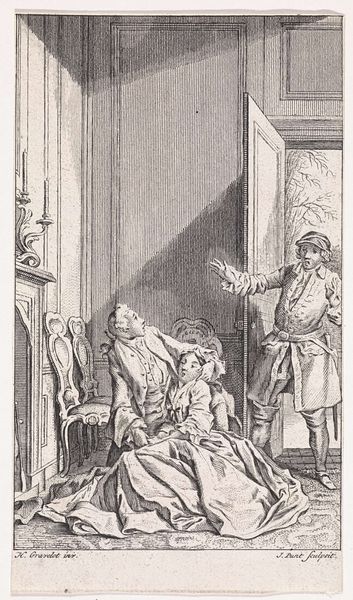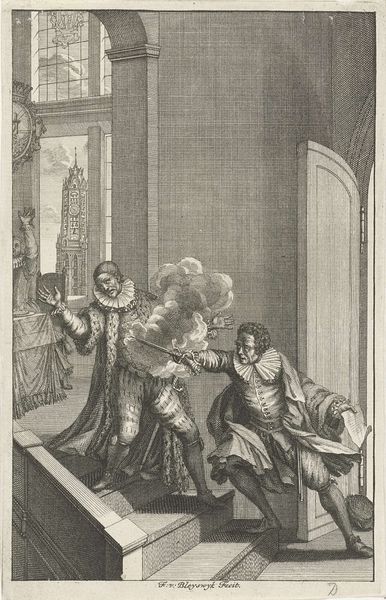
Frontispiece to "Tristram Shandy," Volume 1 1800 - 1850
0:00
0:00
Dimensions: image: 5 1/4 x 3 1/8 in. (13.4 x 7.9 cm) sheet: 6 15/16 x 9 3/8 in. (17.7 x 23.8 cm)
Copyright: Public Domain
Editor: Here we have William Hogarth's "Frontispiece to 'Tristram Shandy,' Volume 1," an engraving from somewhere between 1800 and 1850. It depicts a group of rather caricatured men in a domestic scene. There's something chaotic and a little grotesque about the composition that makes me want to look closer. What do you see in this piece? Curator: The chaos, as you put it, is precisely the point. Hogarth, deeply invested in the socio-political climate of his time, offers us a glimpse into the performative masculinity and societal absurdities that defined much of 18th-century Britain. Consider the conspicuous consumption indicated by their dress and surroundings against the backdrop of widespread poverty. What statement do you think Hogarth is making through this juxtaposition? Editor: It feels like he's satirizing the upper classes, maybe even questioning their legitimacy. The men seem so caught up in their own world, almost oblivious to any larger context. Curator: Precisely! Think about the Rise of the Novel and increased literacy during this period. Hogarth's prints were widely circulated, making his social critique accessible to a broad audience. He’s not just presenting a scene; he’s sparking a dialogue about power, class, and representation. How do you think a contemporary audience might have responded to this? Editor: I imagine some would have found it funny, perhaps even relatable, while others—particularly those being critiqued—would have been offended. It’s like he’s holding up a mirror to society. Curator: Indeed. And a rather unflattering one at that! By placing these figures within a history painting, Hogarth challenges our perceptions and prompts discussions about societal values. Considering this and other work from Hogarth it seems evident he was dedicated to generating some serious reflection among England's elite. Editor: I see how much richer this image becomes when considering its historical context. Thank you. Curator: And thank you, for encouraging us to rethink accepted truths about this artwork, seeing beyond face value and instead finding value within history and discourse.
Comments
No comments
Be the first to comment and join the conversation on the ultimate creative platform.

